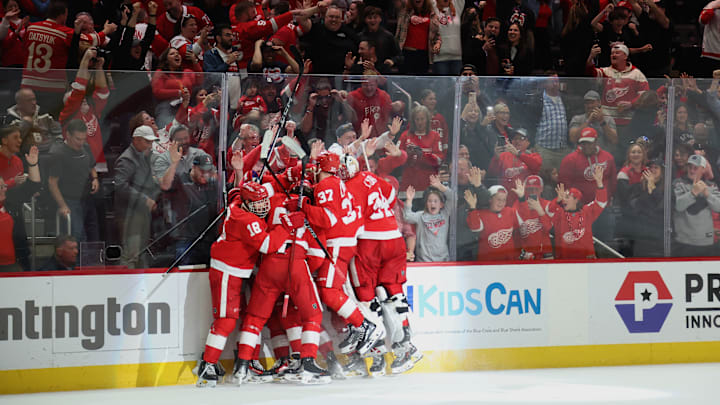2. Enhancing Player Development
Focusing on player development is crucial for the Detroit Red Wings, especially as they navigate and aim for long-term success. Here’s how a robust development strategy can drive the team’s future success:
Building a Strong Foundation: Effective player development helps integrate young talent into the roster, creating a strong core that can contribute over the long term. For the Red Wings, nurturing draft picks and young prospects is vital to building a competitive team. Additionally, developing players from within deepens the roster, providing flexibility and mitigating the impact of injuries throughout the season.
Ensuring Long-Term Success: A commitment to player development fosters sustainable success. By cultivating talent internally, the Red Wings can maintain competitiveness without relying solely on trades or free agency, thus managing salary cap constraints more effectively. This approach also offers financial flexibility to invest in other areas of the team.
Tailoring Development Programs: Implementing individualized training programs allows for targeted skill development, addressing each player’s specific strengths and weaknesses. Effective coaching and mentorship are also essential, providing both tactical guidance and psychological support to help young players thrive.
Creating a Winning Culture: Developing players boosts their confidence and morale, contributing to a positive team environment and enhanced on-ice performance. A well-developed roster helps establish a team identity that aligns with the Red Wings' traditional values and playing style, leading to greater cohesion and motivation.
Optimizing Scouting and Drafting: A strong focus on scouting and drafting strategies is necessary to identify and acquire high-potential players. The Red Wings must maximize the value of their draft picks and ensure that they are adding players who fit the team’s long-term vision. Establishing a solid development pipeline, including strong partnerships with junior and minor league affiliates, facilitates smooth transitions to the NHL.
Adapting to Change: Player development programs must adapt to evolving game trends and new playing styles. Incorporating modern technology and analytics can provide valuable insights into player performance, enhancing training and development strategies to prepare players for the modern game.
Gaining Support and Building Excitement: Successful player development generates excitement among fans and revitalizes interest in the team. Fans are more likely to engage with a team that is developing homegrown talent and showing promise for the future. Furthermore, aligning the entire organization with development goals ensures a unified approach to team-building and player growth.
By focusing on these elements, the Red Wings can build a strong pipeline of talent, driving both immediate and long-term success. Balancing a long-term vision with immediate needs will ensure that every player has the opportunity and support to reach their full potential.
